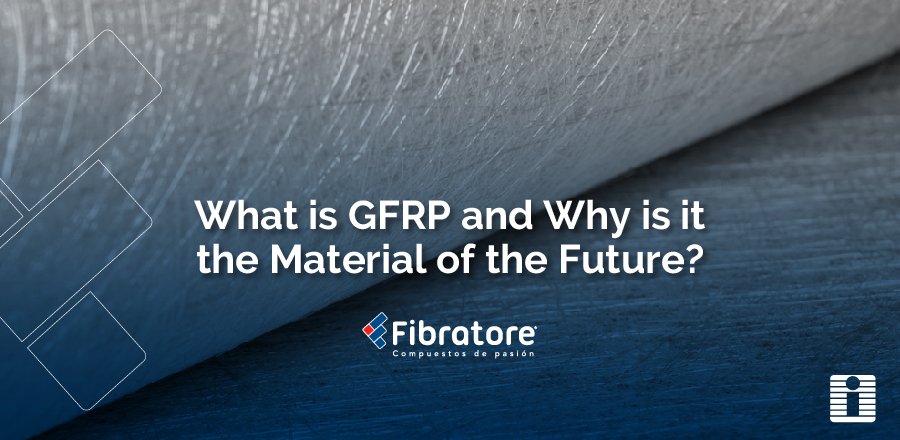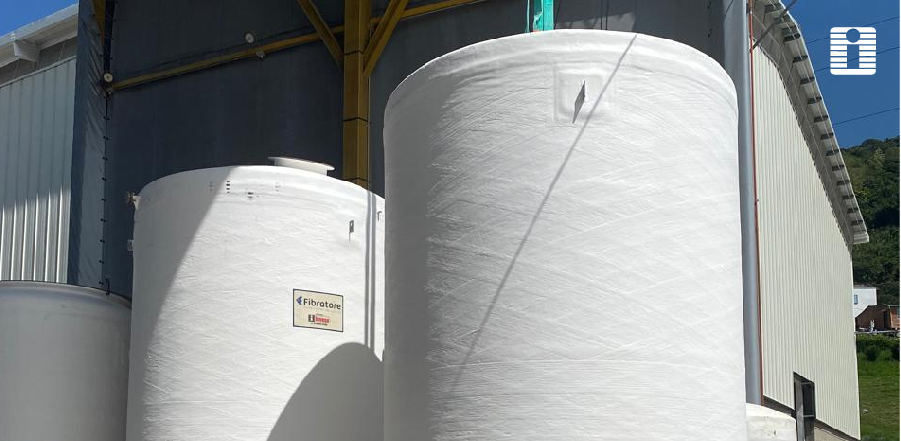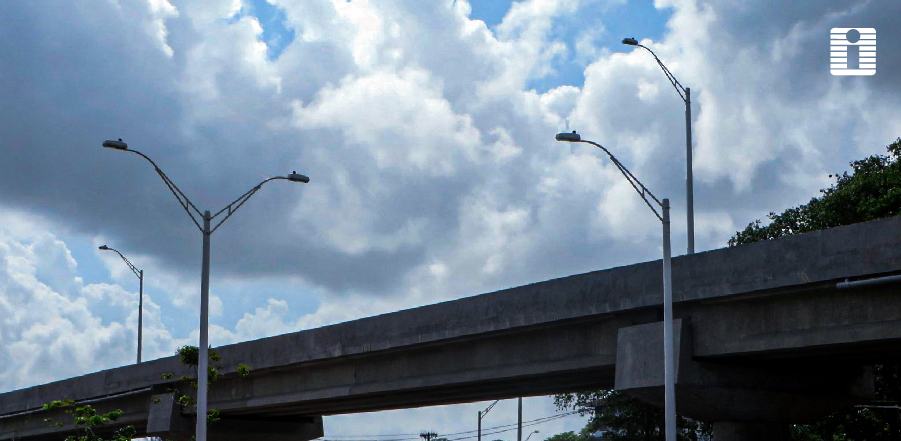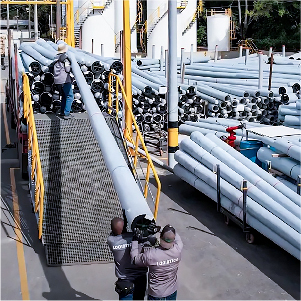
Introduction to Glass-Fiber Reinforced Plastic (GFRP)
In the constant evolution of materials used across various industries, GFRP (Glass-Fiber Reinforced Plastic) stands out as a protagonist with a promising future. This composite material has revolutionized sectors ranging from construction to energy, offering a unique combination of properties that distinguish it from traditional materials. In Colombia, GFRP is rapidly gaining ground, driven by its versatility and numerous advantages. But what exactly is GFRP, and why is it considered the material of the future? Join us on this journey to discover its secrets.
What Exactly is GFRP and How is it Composed?
The heart of GFRP lies in its intelligent composition. It’s a strategic marriage between two main components: polyester resin and glass fiber. The polyester resin acts as the matrix, the binder that holds the fibers together and provides them with shape and resistance to chemical agents. On the other hand, the glass fiber acts as the reinforcement, providing exceptional mechanical strength, especially tensile strength. The combination of these two elements results in a material that inherits the best qualities of both, overcoming the limitations they would have separately. The manufacturing process involves impregnating the glass fibers with polyester resin, followed by a curing process that solidifies the mixture, creating a robust and durable material.
The Surprising Properties of GFRP that Make it Unique
The properties of GFRP are what truly set it apart and position it as a material with a bright future. Among its most notable characteristics is its lightness, being significantly less dense than steel, which facilitates its transport and installation. Despite its low weight, GFRP exhibits remarkable mechanical strength, comparable to and even superior to some metals in certain applications. Furthermore, its inherent corrosion resistance makes it an ideal choice for aggressive environments where rust and deterioration are a constant concern. GFRP is also an excellent electrical insulator (dielectric), which makes it crucial in electrical and telecommunications applications. Its versatility allows it to be molded into a wide variety of shapes and sizes, adapting to the specific needs of each project.

Durability and Resistance of GFRP: A Material for the Present and Future
The durability of GFRP is one of its greatest appeals. Products manufactured with GFRP are designed to withstand adverse environmental conditions, including exposure to humidity, UV rays, and temperature variations, without losing their structural properties. This longevity translates into lower long-term maintenance and replacement costs, making it an economically advantageous option. The resistance of GFRP is manifested in its ability to withstand significant loads and stresses without deforming or failing, ensuring the integrity of the structures and equipment where it is used. In a world seeking durable and reliable solutions, GFRP presents itself as a material with a solid future.
Safety and Versatility: The Broad Applications of GFRP
The applications of GFRP are incredibly diverse and continue to expand as new possibilities are discovered. In the construction sector, GFRP is used to manufacture structural profiles, cladding, facades, swimming pools, and a wide range of architectural elements, offering lightness, strength, and design. In industry, we find storage tanks, pipes for transporting corrosive fluids, industrial gratings, and special equipment, leveraging its chemical resistance and durability. GFRP poles for electrical and telecommunications networks are increasingly popular due to their weather resistance, low maintenance, and dielectric safety. These are just a few examples of GFRP’s versatility, a material that adapts to the needs of multiple sectors.
Advantages of GFRP: Why Choose it Over Other Materials?
The advantages of GFRP are numerous and explain its growing popularity. Its lightness facilitates transportation and installation, reducing costs and execution times. Its exceptional corrosion resistance eliminates the need for costly treatments and periodic maintenance. Its durability ensures a long service life for products, which translates into a lower total cost of ownership. Its design versatility allows for the creation of complex and customized shapes. Furthermore, its electrical insulation capacity improves safety in various applications. Compared to traditional materials like steel or concrete, GFRP offers a superior balance of performance, cost, and sustainability.
GFRP in Colombia: A Material with a Bright Future
In Colombia, the adoption of this material is on the rise, driven by the need for durable and efficient solutions in a country with diverse geography and climate. From the construction of corrosion-resistant infrastructure in coastal areas to the development of reliable electrical and telecommunications networks, GFRP offers answers to local challenges. Colombian companies are recognizing the advantages of GFRP and its potential to improve the quality, safety, and sustainability of their projects. The future of GFRP in Colombia looks promising, with continuous growth in its various applications.
Sustainability of GFRP: A Responsible Material for the Planet
Sustainability is an increasingly relevant aspect. While polyester resin is a petroleum derivative, its durability and long lifespan mean that products don’t need to be replaced as frequently, reducing resource consumption in the long term. Furthermore, bio-based resins and more efficient manufacturing processes are being developed to minimize environmental impact. GFRP’s lightness also contributes to sustainability by reducing fuel consumption in transportation. As environmental awareness grows, GFRP is positioned as a material with a focus on responsibility towards the planet.
GFRP as One of the Materials of the Future in Construction
In construction, this material is marking a new era. Its lightness facilitates the prefabrication of structural elements, streamlining construction processes and reducing labor costs. Its corrosion resistance is especially valuable in humid or saline environments, extending the lifespan of buildings. GFRP’s design versatility allows for the creation of innovative and aesthetically attractive architectural shapes. Its thermal insulation capacity also contributes to the energy efficiency of buildings. For all these reasons, GFRP is considered one of the materials of the future in the construction sector globally and, of course, in Colombia.
The Impact of GFRP in Modern Industry
Industry encompasses a wide spectrum of applications, from the manufacturing of components for the automotive and aerospace industries to the production of equipment for the energy and chemical sectors. Its ability to withstand aggressive environments, its lightness, and its mechanical resistance make it an indispensable material for numerous industrial applications. Continuous innovation in manufacturing processes and resin formulations is further expanding the possibilities of GFRP, consolidating it as a key material for technological development and efficiency in modern industry.

Beyond the Conventional: Other Innovative Applications of GFRP (GFRP Poles, etc.)
The applications of GFRP continue to surprise with their innovation. GFRP poles are a clear example of how this material is replacing traditional alternatives, offering greater durability, less maintenance, and safety in electrical and telecommunications networks. In the transportation sector, GFRP is used in the manufacturing of vehicle bodies, train components, and vessels, thanks to its lightness and resistance. In the field of renewable energy, it is used in the manufacturing of wind turbine blades, leveraging its lightness and fatigue resistance. These applications demonstrate the unlimited potential of GFRP to continue transforming various sectors.
Conclusion: GFRP, a Material with Unlimited Potential
In conclusion, GFRP is much more than just a composite material. It is a versatile, durable, safe, and increasingly sustainable solution that is setting the standard in numerous areas, including construction and industry in Colombia and globally. Its surprising properties and numerous advantages position it as the material of the future, capable of facing the challenges of a constantly evolving world. As technology advances and more efficient and responsible solutions are sought, GFRP will continue to play a crucial role in building a more resilient and sustainable future.

